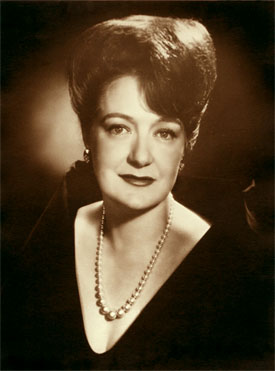
About Suzanne Caygill
Suzanne Caygill, Founder of Color Analysis
By Rochele HC Hirsch

Suzanne’s Message
Suzanne Caygill has mentored directly or indirectly all those who use nature and the seasons as a metaphor for understanding design principles related to human beings. As you begin or continue to study your own personality identification through color and design it seems appropriate to quote from Suzanne’s book, COLOR, The Essence of You:
“The effect of color on human beings and their lives is a vital, dynamic force which cannot be ignored. Through tests and observations … I have proven that individual positive and negative reactions to color can be predetermined.
Color, according to science, is vibration of light, in other words, radiant energy. As perceived color enters the psyche, it is subconsciously filtered into immediate reactions on the physical, emotional, mental and spiritual levels. We are all aware that we have strong likes and dislikes in color, but there is much more to it than casual preference. First, we have genetic color reactions due to personal coloring and physical structure. Second, quite early in life we acquire habit and unconscious color prejudices conditioned by pleasant and unpleasant experiences. Thus, creating appropriate color response in human beings involves both knowledge of personality factors and psychological reactions to stimuli.”
Suzanne’s color theory deals with the “understanding of the aspect of color in serving human needs. It proposes an intuitive and instinctive impulse in every human being toward a constellation of colors in the universal order to which he or she is… related. When this is discovered, color can play an important role in attuning the human system in a harmonious way so that authentic personality results. In this approach, … a new field of color usage [has been] activated.”
Suzanne’s purpose was “to lead you to the source of all color—Nature.” The process, she hoped, would help you to “find inspiration for yourself, an alignment with all in the universal color system that is native to you and which belongs to you.
“It would seem reasonable to assume that the universe was designed, planned and developed with all nourishment supplied, and as inhabitants of the earth we are part of the great design. As the highest form of life, it would be difficult to believe that we were tossed into the midst of this majesty and precision without any consideration for our needs, our temperaments, our talents and special purposes. … If we can appropriate Nature’s color and design, there is no need for the terrific compulsion to search for self, when everything you need is already within.
For your own personality identification through color, I shall try to give you a framework that separates in your mind the difference between an untutored personal opinion and an educated viewpoint. There is nothing more important than genuineness of personality, that a person be right with his or her own design, form and color, and find an at-homeness in the universe. Color is nonverbal communication. Dress is a symbol of what we think of ourselves. Design and color are the means of expressing personality in action. In our apparel and our environments, we need reflections of the truth about us so that we do not project anything that is artificial or distorted.
… through Nature’s harmonies, color as a key to self, we find a way of understanding exactly who we are, a way of getting outside of personal rigidities to connect with those energies that permit us to be ourselves. The more we can accept the colorful messages in the rhythms of the universe, the more authentic we become as persons, the more pleasure we derive for ourselves, and the more we give to others.”
Becoming Acquainted with Color
“… Nature provides a harmonious basis for understanding all the systems and methods of color mankind might need.
One of the easiest ways to become acquainted with color and its variations is to look at categories of food; for instance, the berry family, with its blueberries, huckleberries, blackberries, strawberries, cranberries, or the grape families, with its shadings from Thompson and Catawbas to Concord, or the nut family, from almonds and pecans to Brazils; or the family of spices-cinnamon, ginger, mace, nutmeg. Open a pea pod and look at fresh peas. They are quite different from those in a can, or after heating. When you are talking about fresh pea green, there is only one way to know it.
As we develop our color awareness, let us remember that color is only half of texture, and texture only half of color. You cannot separate the shininess from the redness of an apple, or the frosty cast from the skin of a purple grape, without losing some of the value of the apple or the grape. The relationships built through color and texture are never ending, and as soon as you subtract from one, you subtract from the other. When you look at the white of a camellia, you become aware of its whiteness in relation to the silkiness of its petals. If you were to add another color to it, that would be camellia leaf green. Carry this through to the pink inside of a watermelon and the complementary green of its rind. Now we begin to see with ever greater sensitivity the supreme artistry in our color world.
Added to these variations is the third dimension: Form. The shape of an apple communicates its sheen and color. It is difficult to imagine the color peach except in the velvety texture of a peach, while the lustrous texture of the Chinese cinnabar is more authentic if it is interpreted in enamel…
The Key to Color Harmony
The key to color harmony is in the concept that everything has relationship. Einstein, in his observations, gave us the legacy of the relational concept. The technical truths he left us are directed to the fact that there is total relationship, and all relationships therein are authentically and sensitively organized. That such organization already exists, and that we are a part of it, is the premise for the study of personality identification which follows.
… Within a year’s cycle, we may observe the rotation of the seasons where the story of color is told again and again and again in the most precise and systematic way. Nature renews and renourishes our being with its great panorama of beauty to tell the story of life as it blooms, fades, dies and recreates itself.
Because I [Suzanne] believe that women and men belong to the decorativeness of the earth and are part of the beautiful and universal plan of color, harmony and design, I wish to assist you in accepting the organization of color which will give you this relationship with the natural expressions of beauty and form.
Nature’s color harmonies dwarf all efforts of man. They defy improvement.
Though there may be many color theories, many methods by which to learn to identify color, Nature is the greatest teacher of all. Here is the foundation of all study of color, by whatever method you may pursue.
While Nature divides her colors into four distinctly different groups, she uses a free and lavish hand in her combinations. They are always harmonious because they are related in value and are played against each other with great mastery. Since the first clocking of time, we have identified cycles of vegetation [in temperate latitudes] as Spring, Summer, Autumn, and Winter. In these climatic classifications we find the divisions of color-the vividness of Spring, the muted splendor of Summer, the flamboyance of Autumn, and this high drama of a resting Winter.
Authenticity in Design
If we recognize that everything in the organization of the universe is authentic and correct, then we pose the question, “Does not this organization apply also to human beings?” It seems reasonable to assume each human being has an individualized design, color, and form that is suitable to his or her intrinsic value and intent.
Individual Uniqueness
.. .through the Key to Color Harmony you will have an opportunity to see yourself with colors that are characteristic of your natural pattern, that give you distinction, separate you as a unique personality and fashion you unlike any other living thing. The word harmony comes from the Greek harmonia—”fitting in,” “agreeing with.” Just as the foliage of each plant is designed to give significance to each flower, so should the ornamentation of clothing, jewelry, furs, textures and even the woods in your home furnishings, enhance your native pigmentation and give significance to you as an individual.
Each human being’s primary objective is in developing and maintaining personal uniqueness. Unlike any other form of life, human beings have been endowed with selectivity. We alone have the ability to apply, alter or distort the color, ornamentation, or surroundings in which we live. We have been enmeshed and entangled in a culture which permits and encourages a misrepresentation and artificiality of self, while on the other hand pleads with us for an appreciation of the higher dignities of man. Such a paradoxical way of life inhibits the spontaneity of reaction which controls the natural impulse.
A New Frame of Reference
To translate ourselves into the terms of modern dress and habitats without concern for our natural instincts necessitates a departure from our own selves. We need, in fact, to create a new frame of reference. Since color reaches a person at the subconscious level and instills, inspires and insists upon its own reactions, we can find it motivating toward the highest concept of self. In so doing, we gain a natural identification of ourselves as related to the universe, and tap unlimited sources of energy and capacity for affirmation within ourselves.”
[Suzanne’s seasonal frame of reference is obviously influenced from the temperate latitudes, as in North America. Other parts of the world have different “seasons” or climatic conditions expressed in nature. However, when we listen to the rhythm of Suzanne’s words and understand the body of her analogy, we can see that each “season” has a relationship grouping of color and design concepts that relate to human beings. Each individual will recognize in his or herself a connection with one of these groupings. Look at all the elements within each “season” and connect to the group that is right for you as an individual. Your uniqueness will also choose from among the concepts of each season, eliminating those that have no personal connection.]
